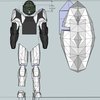The major global aid agencies such as the WHO, UNICEF and the FAO agree that over 1.8 billion people worldwide have access only to water which is contaminated with feces. Moreover, in many regions of the world, gastro-intestinal diseases are responsible for much of the child mortality.
Why don't you use....?
Apart from the industrial production of drinking water in large-scale plants, there are four different approaches to producing potable water:
- Filtering
- Boiling
- Solar Disinfection
- Chlorination
Each of these options has its advantages and disadvantages. Filters can be reused to process large quantities of water. The downside, however, is that they do not filter out all the pathogens from the water, and spare parts are expensive and complicated to procure. Boiling is a very effective purification method, but it uses fuel which is not cheap and should be put to better use for preparing food. Solar disinfection uses the UV radiation in sunlight to purify the water by killing off all the pathogens therein. This method can disinfect only 1-5 liters in a bottle and the water must not be cloudy. Chlorination also only works if the water is not cloudy and it gives the water an unpleasant taste and smell. The advantage of chlorination is that large quantities of water can be disinfected at the same time. Regardless of how the water was made potable, it then has to be stored. Incorrect storage can lead to recontamination. The storage containers must be closed and it is best if the water can be used directly from the container. If the disinfection method is not applied correctly, this can also lead to pathogens remaining in the water. In the long term, this quickly leads to the population not bothering to disinfect drinking water because it is a pointless exercise in their eyes.
The SciPIo
The SODIS method exploits the germicidal effect of the UV in sunlight to disinfect contaminated water contained in conventional PET bottles. The reports on the problems encountered when using this albeit successful and low-cost method of disinfecting potable water gave us the idea of developing an indicator which monitored the SODIS process taking place in the bottle. Scipio consists of a cylindrical plastic housing whose diameter is so small that it can fit into conventional PET bottles. To fulfill all necessary requirements, several technical problems have to be solved:
- Energy supply
- ascertain whether Scipio is immersed in water
- ascertain whether the bottle has been shaken up correctly
- assess the orientation of the bottle in the sun
- measurement of the UV intensity and the temperature
- User interaction
 Theodor Hillebrand
Theodor Hillebrand





is it sure, all germs killed from sunlight in 6 hours? Did you make a test?